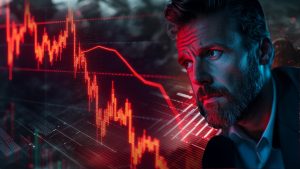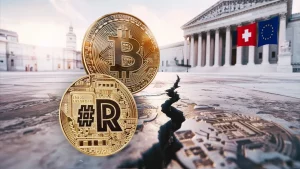Volatility can very often be a scary word for responsible savers and investors looking to protect their assets over the long run. However, understanding the distinction between volatility and risk could make a very big difference in the pursuit of long-term value preservation.
“A tendency to change quickly and unpredictably”: this is how Merriam Webster defines volatility. It certainly has something of a bad name and it’s no wonder so many of us feel threatened by it: nobody is comfortable around a “volatile” person and we wouldn’t want to take a family vacation to a “volatile” region. Especially when it comes to our life savings, we certainly don’t want them invested in anything that could even remotely be described as volatile. In fact, for most conservative, responsible, sensible investors and savers, the idea of actively choosing such vehicles is dangerously close to reckless gambling.
But if we forget for a second about the sinister connotations that have been attached to the word itself over the years and focus only on its core meaning, it might start to seem a bit less scary. If you think about it, “quick and unpredictable changes” are all too common in our lives. They might vary in importance and in the weight of their consequences, but they are at the core of our human experience. They happen multiple times in an average day, and yet we still leave our houses. They even happen inside our houses, yet we still dare to get out of bed each morning.
In fact, to a large extent, it is these unpredictable changes that make any system more robust, as they spur adaptability, necessitate agility and provide the impetus to develop higher preparedness and better, faster and smarter responses for next time. They offer valuable lessons and they often create opportunities. One can see this in nature and in the way forest fires clear out the forest floor from debris, allowing stronger and healthier trees to grow. We can also see it in the effect that other unexpected disasters have on human behavior, as we always tend to become more resilient and to develop more sophisticated prevention, prediction and response systems each time such tragedies strike.
Although volatility, or by extension entropy, is the natural state of nature and the entire universe, most of us humans seem stubbornly intimidated by it. In fact, it scares us so much that we sometimes misidentify it and mistake it for risk. Anything that moves in a way that we did not fully anticipate, or behaves in a way that we could not readily foresee, is incorrectly classified as “risky.” Of course, there is a difference between risk and volatility, but it can be hard to tell. This important difference becomes much clearer when we flip the coin and think of it this way: What is stable is not necessarily safe. Nassim Taleb offers a great example: turkey that is fed every day enjoys a “stable” life, as it’s been taken care of predictably, regularly and without any wild fluctuations in its feeding schedule. But we know that this happy turkey is definitely not safe, as it also comes to realize the day before Thanksgiving.
This mistake is especially dangerous when it comes to investing and it frequently leads to poor decisions. The now infamous Bernie Madoff pyramid scheme was impressively “stable” for over 15 years. It consistently delivered around 10% return with close to zero volatility every year, until the year 2008 when it was exposed as multibillion dollar fraud. This might seem like an isolated, freak incident, similar to any other well crafted or well executed fraud that promises steady profits. Surely, we can’t generalize, right?
Let’s take a look at some of the most stable “traditional” investments, namely government bonds with low volatility. Because of this very misunderstanding, they are considered essentially “risk-free,” but on closer inspection, this assessment seems absurd. We are dealing here with debt for which there is no collateral and which is issued by an over-indebted company that, moreover, has the power to simply print the money it owes. Savings accounts are also an extremely “stable” option for nest eggs and are widely considered to be very safe. Well, until they aren’t, of course. Much like our unfortunate Thanksgiving turkey, countless bank customers in Cyprus, Greece, Lebanon and elsewhere have found that out the hard way.
In fact, pretty much every investment that promises regular, predictable and consistent returns, is actually a mirage when one looks at it more closely and the only reason some of them can keep going longer than others is the blind faith that investors have in them. And what feeds that faith is the root of the problem. Every metric we use to assess risk, every indicator investors rely on to separate “safe” from “speculative”, is based on this misconception! They look at historic price movements and their fluctuation (or lack thereof) and use that and that alone to determine what is considered safe. This is a very myopic and flawed way of evaluating risk, because, as you have doubtlessly seen printed on all kinds of investment publications and reports, “past performance is not indicative of future results”.
This is why at RealUnit, we look at this differently. Our aim is to preserve value and to offer increased crisis resistance and that does indeed steer us towards low volatility investments very often. But volatility is not the reason we choose what we invest in. It’s actual, real risk assessment that encompasses a lot more than searching for mere stability. For instance, the price of gold can fluctuate quite a bit, but it is one of the safest investments one can think of, while as mentioned above, instruments like government bonds might be low volatility, but they’re certainly not low risk, let alone “risk free”.
Vahan P. Roth, CIO RealUnit Schweiz AG
The author







